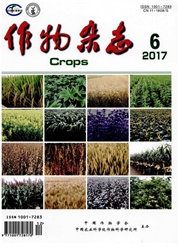

 中文摘要:
中文摘要:
大豆田蓟马原属次要害虫,近年来逐渐上升为主要害虫。现已知2亚目3科12属21种,少数种类为捕食性;大部分为植食性,且寄主植物范围广泛。植食性蓟马不仅在大豆上取食或产卵为害,还能传播植物病毒,栖花的蓟马是大豆不育系的传粉媒介之一。从大豆出苗到结荚期均有发生,尤以苗期为害严重。在大豆田节肢动物群落中,植食性蓟马的优势度较高;在不同生育期,蓟马空间分布型有所差异。有害蓟马综合治理应采取以农业防治为基础,物理防治和生物防治为主,化学防治为辅的综合治理策略。总结大豆田蓟马种类、生物生态学特性及防治方法方面的研究现状,可为大豆田有害蓟马综合治理提供参考。
 英文摘要:
英文摘要:
Thrips (Thysanoptera) that were formerly secondary pests in soybean field gradually increased as main pests in recent years, including 2 suborder 3 families 12 genera 21 species in China. A small number of species are predatory but most of these species are herbivorous with a wide range of host plants. Phytophagous thrips seriously damage the plants from seed germination to pod stage, especially in seeding stage, by sucking the sap of seedlings with rasping-mouthparts, laying eggs in tissues and spreading plant viruses. Thrips inhabited on flowers were pollinator of soybean sterile lines. In soybean arthropod communities, dominance of phytophagous thrips was higher than other pests. The spatial distribution pattern of thrips was different at several growth stages. The management strategy for harmful thrips should be taken based on cultural control, with physical control and biological control as the main measures supplemented by chemical control. The current research on thrips species, bioecology and control methods was aimed to provide a reference for the integrated pest management of harmful thrips in soybean fields.
 同期刊论文项目
同期刊论文项目
 同项目期刊论文
同项目期刊论文
 期刊信息
期刊信息
